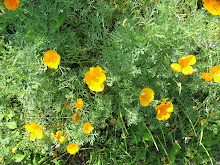Today I as well as many other Massachusetts Audubon Society members received an email from Kylee Wilson from the Boston Nature Center introducing the "Land and Water" plate, which features, in addition to the name of the cause, an illustration of a tree that sort of looks like a cedar. The plate costs $40, plus the $20 Registry of Motor Vehicles plate swap fee. $28 is a tax-deductible contribution to the Massachusetts Environmental Trust. But Wilson explained in the email that the Registry will only produce a special plate if 3,000 individuals send a check first. "If we don't get the 3,000 orders, checks will eventually be returned, the opportunity will be lost, and more land will be paved."
Whoa! I take it there's a sense of urgency here. Funding must be tight for many of the grassroots organizations involved with monitoring and restoring natural areas including bodies of water and marshes, educating people about environmental preservation, and (near and dear to my heart) organizing community gardens, among other activities, especially as we enter a recession. Not to mention that finances are tight for some of us individuals who (like myself) work less than full-time, and may have also gotten a $40 ticket this morning for parking on the wrong side of the street during street cleaning.
If someone from the Boston Nature Center is promoting this plate, I may just consider it, even if it means giving up my endangered discontinued plate with green letters (for example, see the second one here) that I've had for 15 years. Like community gardens, the BNC is one of the best ways that neglected land in this area has been reclaimed in recent years.








